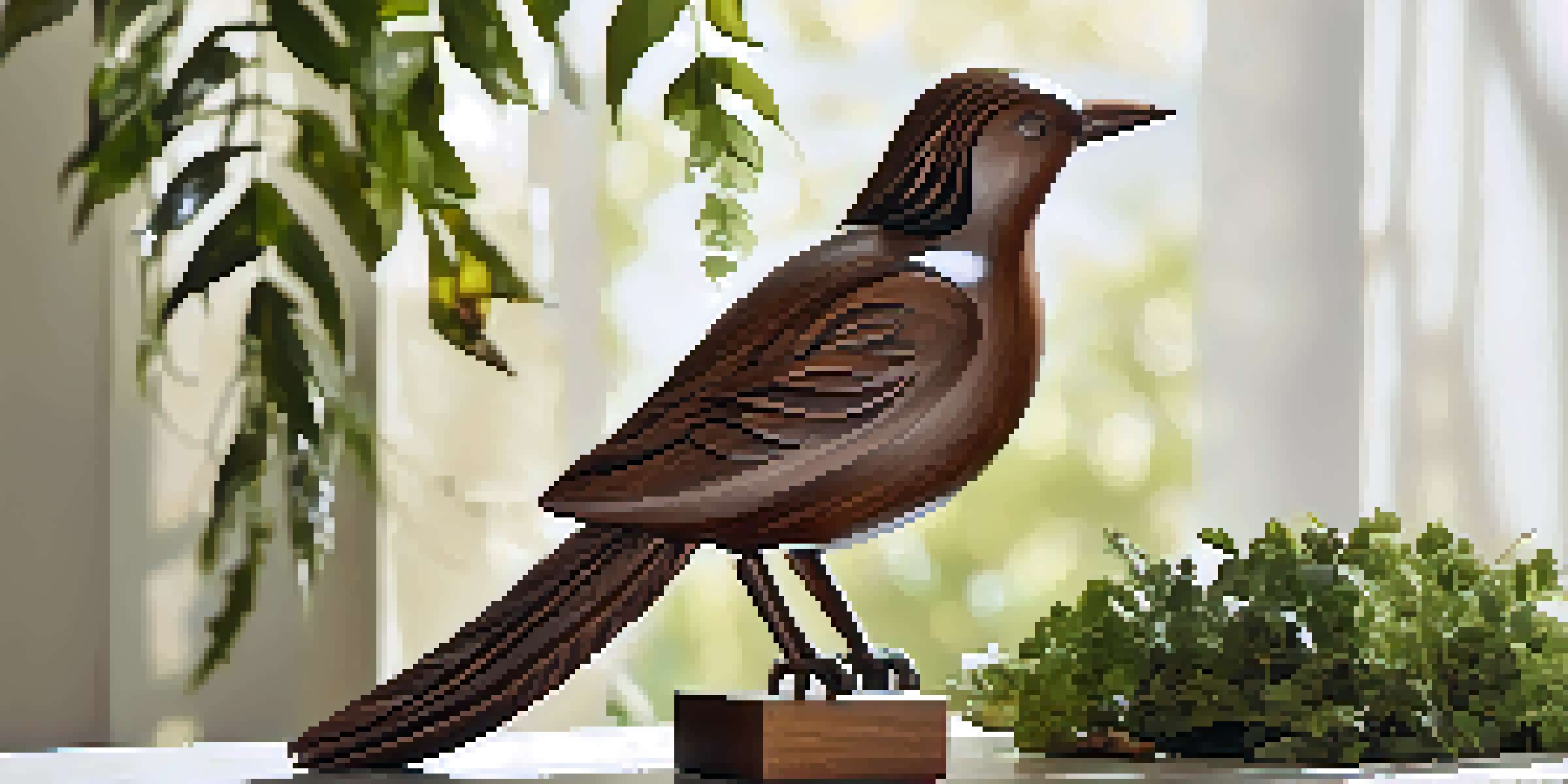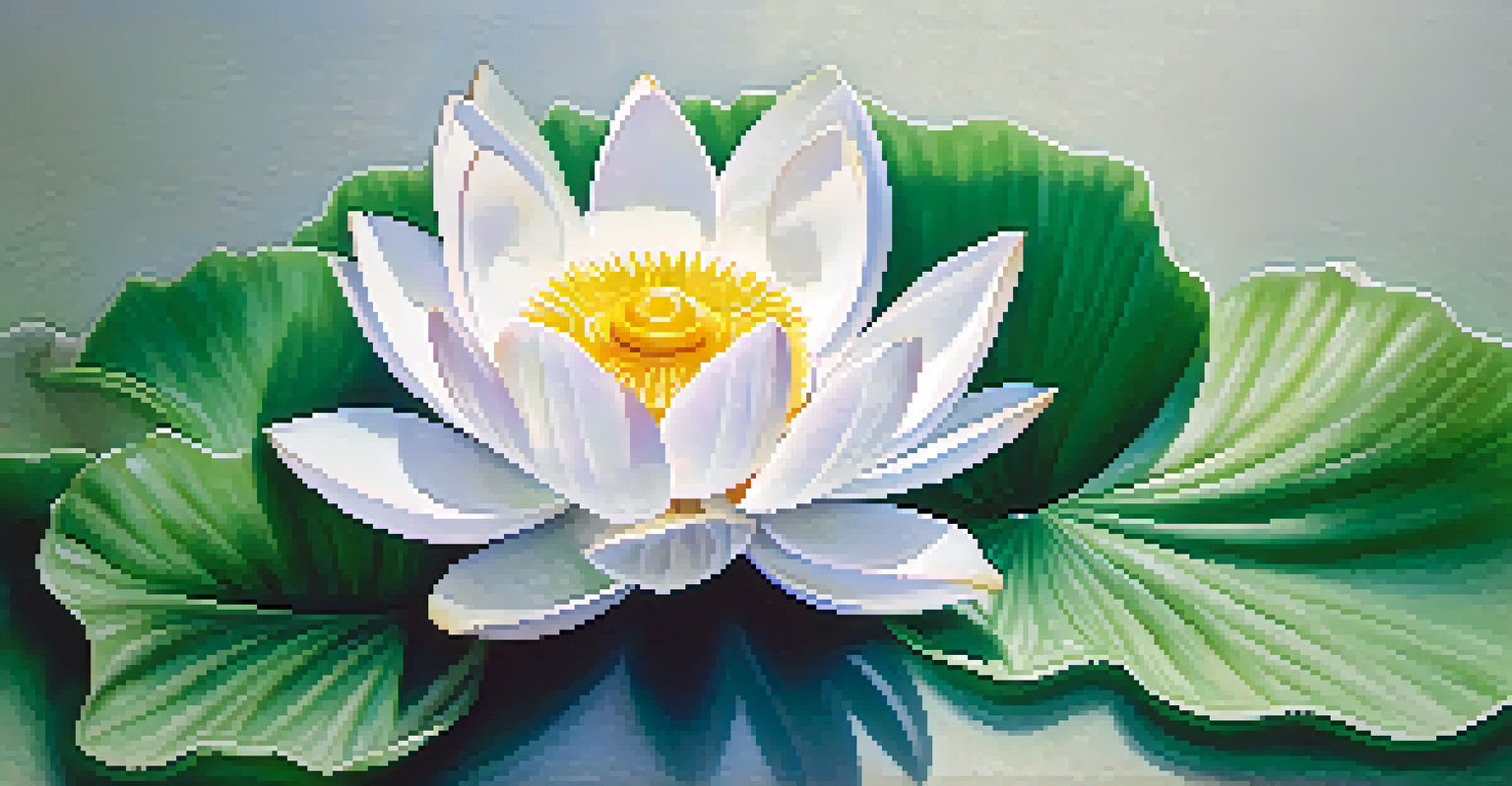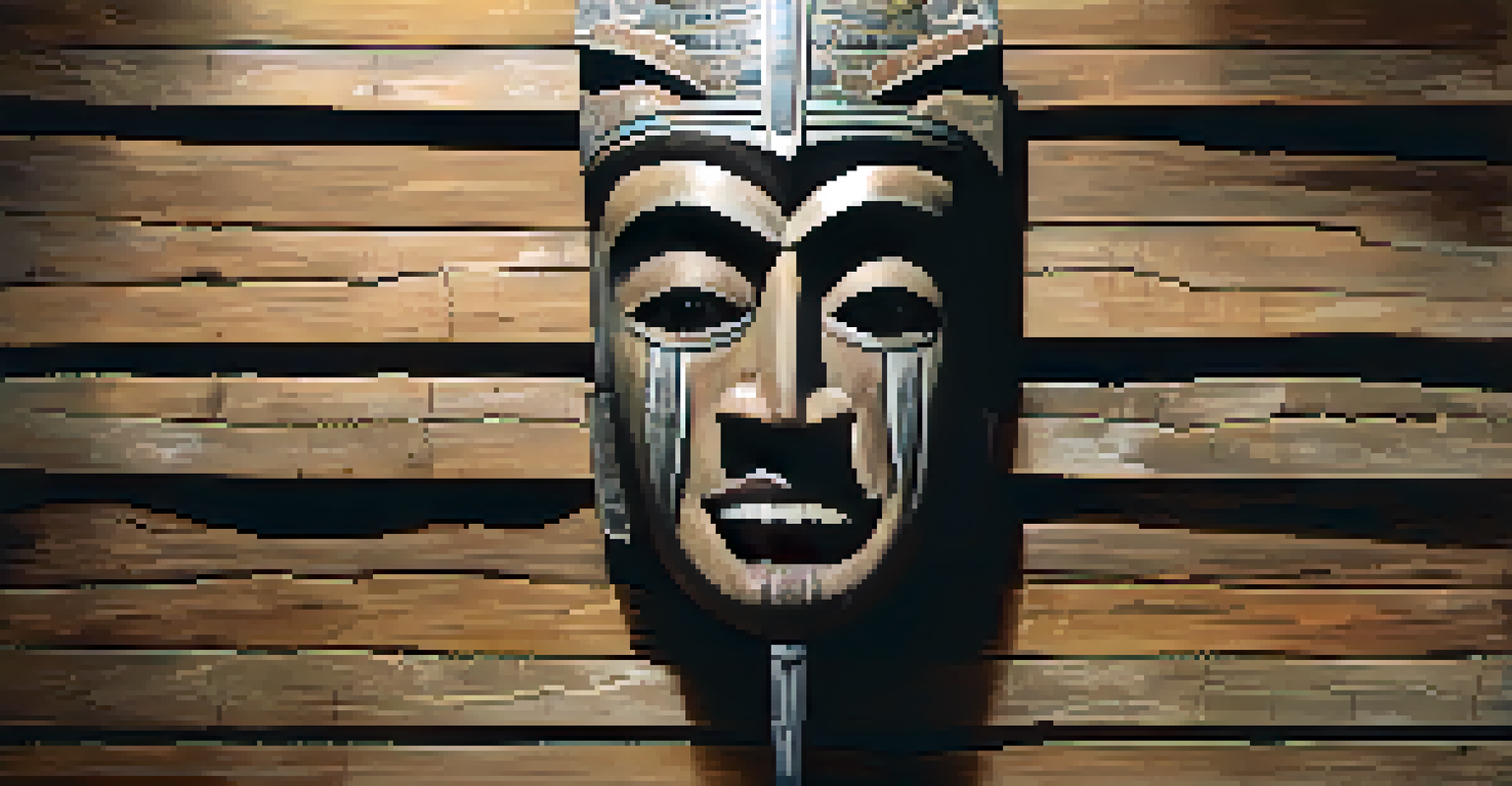Symbolism in Carving: Communicating Through Art

Understanding Symbolism in Carving: An Overview
Symbolism in carving is a powerful tool that artists use to convey deeper meanings and narratives. Just as words can have multiple interpretations, so too can the shapes and forms created through carving. This artistic practice transforms solid materials into representations of concepts, emotions, and cultural stories. By understanding the symbols embedded in carvings, viewers can uncover layers of meaning that enrich their experience of the artwork.
Art is the most beautiful of all lies; it is the truth of a symbol.
For instance, a simple figure of a bird might represent freedom or transcendence, depending on the context and culture. Carvings can be found in various forms, from ancient sculptures to modern art, each telling its own story through symbolic representation. As we delve into the world of carving, we will explore how these symbols serve as a language of their own, communicating profound messages without the need for words.
Ultimately, recognizing the symbolism in carving allows us to connect with the artist's intent and the cultural significance behind each piece. It's a fascinating intersection of art and communication, where every detail holds potential meaning. This exploration will guide us through the different elements that contribute to the rich tapestry of symbolism in carving.
The Role of Materials in Symbolic Carving
The choice of materials in carving plays a crucial role in the symbolism of the final piece. Different materials carry their own meanings and associations, which can enhance the narrative the artist intends to convey. For example, wood might symbolize growth and life, while stone often represents permanence and strength. Artists are keenly aware of these attributes and often select materials that align with the message they wish to communicate.

In many cultures, specific materials also hold historical or spiritual significance. For instance, jade is revered in Chinese culture for its association with purity and moral integrity. When artists choose jade for their carvings, they tap into these deeper meanings, inviting viewers to consider not just the visual aspect, but the material's symbolic weight as well. This adds another layer of depth to the artwork.
Symbolism Enhances Artistic Meaning
Understanding the symbolism in carving allows viewers to uncover deeper meanings and connect with the artist's intent.
Thus, the interplay between material and message becomes a vital aspect of symbolic carving. By choosing certain mediums, artists can augment their storytelling, creating pieces that resonate on both a visual and emotional level. Understanding this relationship helps us appreciate the artistry and intention behind each carved piece, making the experience more enriching.
Cultural Context: Shaping Symbolism in Carving
Cultural context heavily influences the symbolism found in carving, as different societies imbue unique meanings into their artistic expressions. For instance, in African art, masks often symbolize ancestral spirits or cultural identity, serving as a bridge between the physical and spiritual worlds. Understanding these cultural backgrounds can greatly enhance our interpretation of carvings from various regions.
The best artist has no conception that a marble block does not contain within itself.
In contrast, Native American carvings frequently reflect themes of harmony with nature and spirituality, with animals representing specific traits or lessons. These cultural narratives are not just historical; they continue to inform contemporary artists as they draw inspiration from their heritage. By exploring the cultural significance behind specific symbols, we can better appreciate the depth and richness of each carving.
As we examine the diverse cultural contexts of carving, we see how they shape the symbols used and the stories told. This exploration fosters a greater respect for the craftsmanship and creativity that goes into each piece, reminding us that art is a reflection of the human experience, deeply rooted in cultural identity and collective memory.
Iconography: Common Symbols in Carving
Iconography in carving refers to the use of specific symbols and images that convey particular meanings. Many artists draw upon a shared visual language, utilizing common symbols that resonate across cultures. For instance, a serpent might symbolize duality or transformation, while a tree could represent life and growth. Recognizing these symbols allows viewers to engage with the artwork on a deeper level.
Some symbols have been utilized throughout history, transcending cultural boundaries. The lotus flower, for example, is often associated with purity and enlightenment in various traditions, from Buddhism to ancient Egyptian art. Such universal symbols enrich the narrative of the carving, inviting viewers to explore connections between different cultures and their shared human experiences.
Materials Shape Symbolic Narratives
The choice of materials in carving adds layers of meaning, as each medium carries its own associations that enhance the artwork's message.
By understanding iconography in carving, we unlock a treasure trove of meanings embedded in the images before us. This knowledge not only enhances our appreciation of the art but also fosters a sense of unity as we recognize the common themes that resonate across different societies. It serves as a reminder that, despite our differences, we share a collective language of symbols that speaks to the human experience.
Emotional Expression through Carving
Carving is a deeply emotive art form that allows artists to express feelings and experiences through their work. The act of carving itself can be a cathartic process, enabling artists to channel their emotions into tangible forms. Whether it's joy, sorrow, or nostalgia, these feelings often manifest in the final piece, creating a powerful connection with the audience.
For example, a carving depicting a figure in despair can evoke empathy and reflection from the viewer, tapping into shared human emotions. This emotional resonance is what makes carving such a compelling medium; it allows for a dialogue between the artist and the observer. Through their work, artists invite us to explore our own feelings and experiences, fostering a sense of connection.
As we engage with carved pieces, we find that the symbolism often amplifies the emotional impact. A simple shape or figure can carry profound feelings, inviting us to reflect on our interpretations and experiences. This interplay between symbolism and emotion is what makes carving a unique form of storytelling, bridging the gap between artist and audience.
The Process of Carving: Transforming Ideas into Symbols
The process of carving is an intricate journey that transforms abstract ideas into concrete symbols. Artists often begin with a concept or emotion they wish to convey, sketching their ideas before selecting a material. This initial stage is vital, as it sets the foundation for the symbolism that will emerge in the final piece. Each decision made during this phase influences how the message will be communicated.
As the artist begins to carve, they must carefully consider their technique and approach, as these choices can affect the piece's overall meaning. For example, softer lines might evoke gentleness, while sharp angles could convey tension or conflict. This level of intentionality in the carving process highlights how every detail contributes to the storytelling aspect of the artwork.
Cultural Context Influences Symbols
Cultural backgrounds significantly shape the symbolism in carving, providing unique interpretations that enrich our understanding of the art.
Ultimately, the transformation from idea to symbol through carving is a thoughtful and deliberate process. By understanding this journey, we can appreciate the skill and creativity involved in crafting meaningful pieces of art. It sheds light on the dedication and passion that artists pour into their work, making each carving a unique expression of their vision.
The Future of Symbolism in Carving
As we look to the future, the evolution of carving continues to be shaped by cultural shifts, technological advancements, and the exploration of new materials. Contemporary artists are reinterpreting traditional symbols while also creating entirely new ones that reflect modern experiences. This blending of old and new opens exciting avenues for expression and communication through carving.
Moreover, the rise of digital tools and techniques is transforming the way artists approach their craft. Digital carving machines and software allow for precision and innovation, enabling artists to experiment with complex designs that were once unimaginable. This fusion of technology and traditional techniques is likely to lead to a new wave of symbolic carving that resonates with contemporary audiences.

In this dynamic landscape, the essence of symbolism in carving remains at the heart of artistic expression. As artists continue to push boundaries and explore new narratives, the stories told through carving will undoubtedly evolve, reflecting the ever-changing human experience. Embracing this future encourages us to appreciate the past while looking forward to the new meanings that will emerge in this timeless art form.